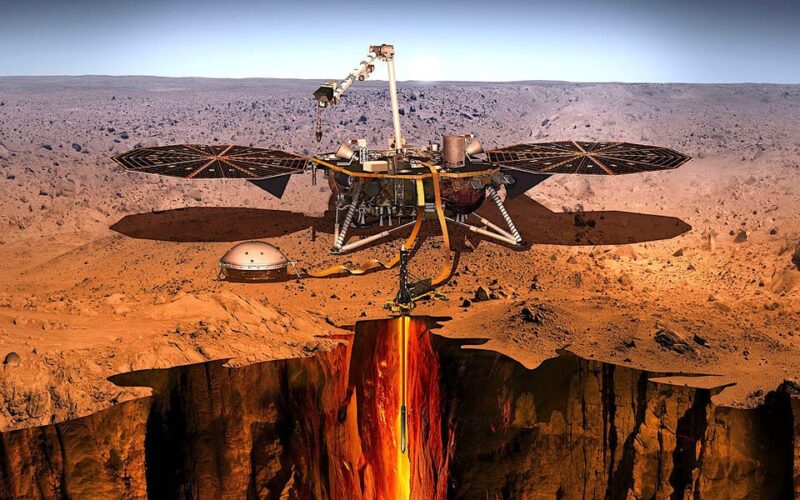Scientists discovered evidence of a reservoir of liquid water seven to 13 miles below the Martian surface, lingering in the pores of the planet’s crust.
They believe there’s enough to cover the entire planet with an ocean about one mile deep.
The water, if it exists, is too deep to access in the foreseeable future. Still, it’s another promising sign that Mars could one day yield the most disruptive discovery in human history — that of life beyond Earth.
The discovery, announced Monday, comes just weeks after NASA’s Perseverance rover drilled a rock sample on Mars that could contain evidence of microbial life from a bygone era.
NASA/JPL-Caltech/ASU/MSSS
Ancient remnants of long-extinct alien life are all NASA can hope for on the parched Martian surface. But any sizeable source of liquid water, like these potential underground reservoirs, is a place to check for active microbial life — even though water 10 miles underground would never see the light of day.
“It’s certainly true on Earth — deep, deep mines host life, the bottom of the ocean hosts life. We haven’t found any evidence for life on Mars, but at least we have identified a place that should, in principle, be able to sustain life,” Michael Manga, a co-author of the study and planetary scientist at the University of California, Berkeley, said in a press release.
Marsquakes helped NASA find water clues
When NASA put a seismometer on Mars, aboard its InSight lander, the goal was to peer into the planet’s interior.
NASA/JPL
Though the InSight mission ended in 2022, scientists are still sifting through all the data it collected in hopes of learning something new about Mars’s depths.
InSight’s seismometer instrument measured Marsquake activity, mapping seismic waves. As those waves move through the Martian interior, their timing and the direction they travel are influenced by the material they’re traveling through deep underground.
So, by measuring the waves, the scientists of the new study can tell what’s underneath the planet’s surface. It’s similar to how the waves of an X-ray or CAT scan can reveal what’s inside a human body.
Manga and his colleagues used mathematical modeling to determine that a deep layer of fractured igneous rock, saturated with water, best explains InSight’s data. Their findings were published in the peer-reviewed journal Proceedings of the National Academy of Sciences on Monday.
James Tuttle Keane and Aaron Rodriquez, courtesy of Scripps Institute of Oceanograph
A clue in a Mars mystery
In addition to being downright fascinating and potentially overturning humanity’s conception of Mars as a lifeless, dry red rock, the new findings may help solve one of the planet’s greatest mysteries: where all the water went.
Mars’s surface was once lush with water. Heck, the Perseverance rover is exploring a basin that used to be a giant lake and river delta.
But the planet didn’t have a strong magnetic field, like Earth’s, to help it hold onto its atmosphere. As a result, the sun’s radiation wore away what little protective layer of atmospheric gases existed, and the planet dried up.
By about 3 billion years ago, all the water was gone. Some of it is still frozen in Mars’s ice caps. Perhaps some simply vaporized in the harsh space environment. But scientists haven’t really figured out where it all went.
The new findings suggest some of the water seeped deep into the planet’s crust.
Source link
lol

